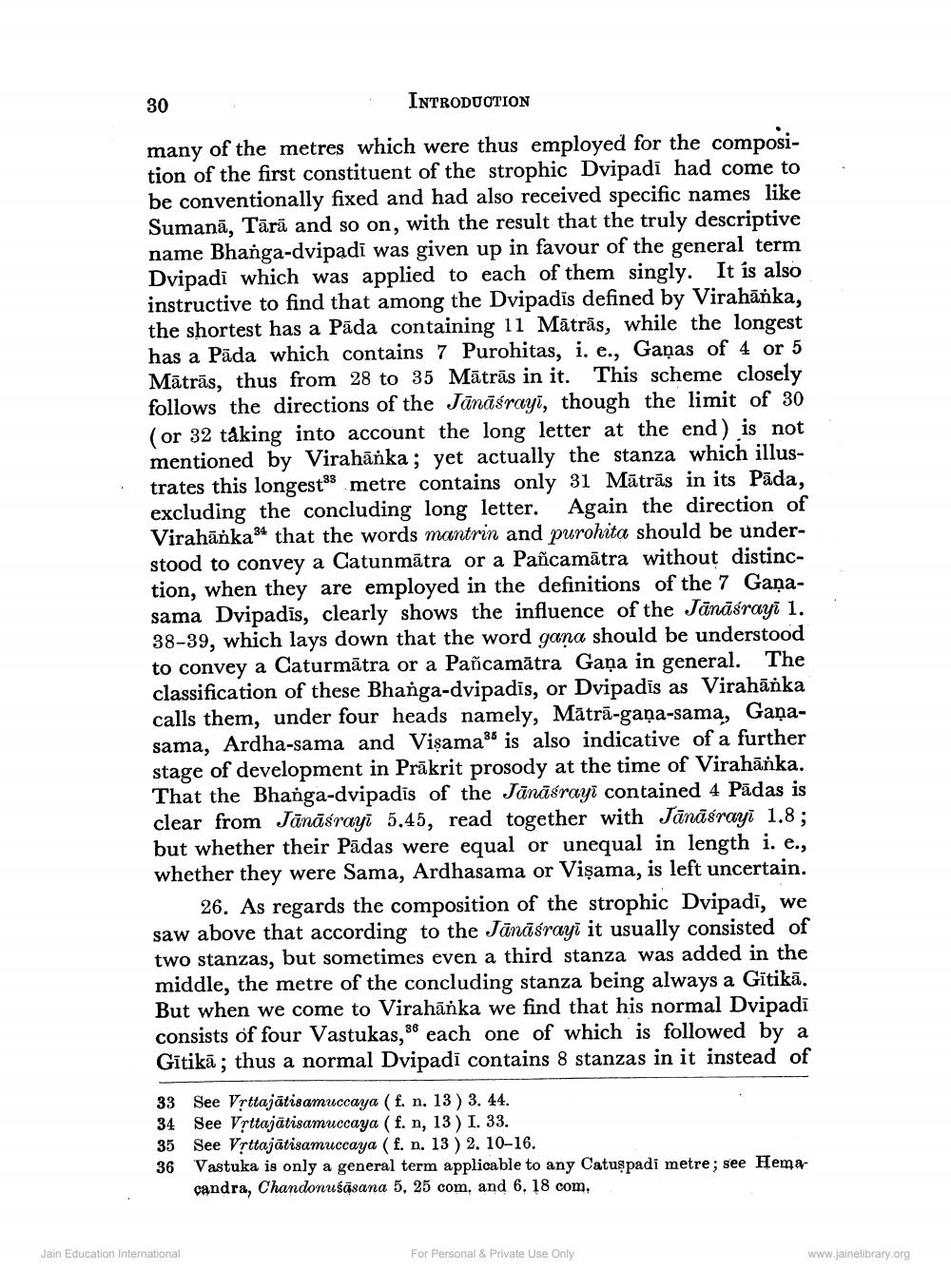________________
30
INTRODUCTION
many of the metres which were thus employed for the composition of the first constituent of the strophic Dvipadi had come to be conventionally fixed and had also received specific names like Sumanā, Tārā and so on, with the result that the truly descriptive name Bhanga-dvipądī was given up in favour of the general term Dvipadi which was applied to each of them singly. It is also instructive to find that among the Dvipadis defined by Virahāńka, the shortest has a Pāda containing 11 Mātrās, while the longest has a Pāda which contains 7 Purohitas, i. e., Gaņas of 4 or 5 Mātrās, thus from 28 to 35 Mātrās in it. This scheme closely follows the directions of the Jānāšrayi, though the limit of 30 (or 32 taking into account the long letter at the end) is not mentioned by Virahānka; yet actually the stanza which illustrates this longest metre contains only 31 Mātrās in its Pāda, excluding the concluding long letter. Again the direction of Virahāňka34 that the words mantrin and purohita should be understood to convey a Catunmātra or a Pañcamātra without distinction, when they are employed in the definitions of the 7 Gaņasama Dvipadis, clearly shows the influence of the Jānāšrayi 1. 38-39, which lays down that the word gana should be understood to convey a Caturmātra or a Pañcamātra Gaņa in general. The classification of these Bhanga-dvipadis, or Dvipadis as Virahānka calls them, under four heads namely, Mātrā-gana-sama, Gaņasama, Ardha-sama and Vişamas is also indicative of a further stage of development in Prākrit prosody at the time of Virahāňka. That the Bhanga-dvipadīs of the Jānāśrayi contained 4 Pādas is clear from Jānāśrayi 5.45, read together with Jānāśrayi 1.8; but whether their Pādas were equal or unequal in length i. e., whether they were Sama, Ardhasama or Vişama, is left uncertain.
26. As regards the composition of the strophic Dvipadi, we saw above that according to the Jānāśrayi it usually consisted of two stanzas, but sometimes even a third stanza was added in the middle, the metre of the concluding stanza being always a Gītikā. But when we come to Virahāňka we find that his normal Dvipadi consists of four Vastukas, 36 each one of which is followed by a Gītikā; thus a normal Dvipadi contains 8 stanzas in it instead of
33 See Vsttajātisamuccaya (f. n. 13 ) 3. 44. 34 See Vrttajätisamuccaya (f. n, 13 ) I. 33.
See Vsttajātisamuccaya (f. n. 13 ) 2. 10-16. 36 Vastuka is only a general term applicable to any Catuspadi metre; see Hema
candra, Chandonuśäsana 5, 25 com, and 6. 18 com,
35
Jain Education International
For Personal & Private Use Only
www.jainelibrary.org




